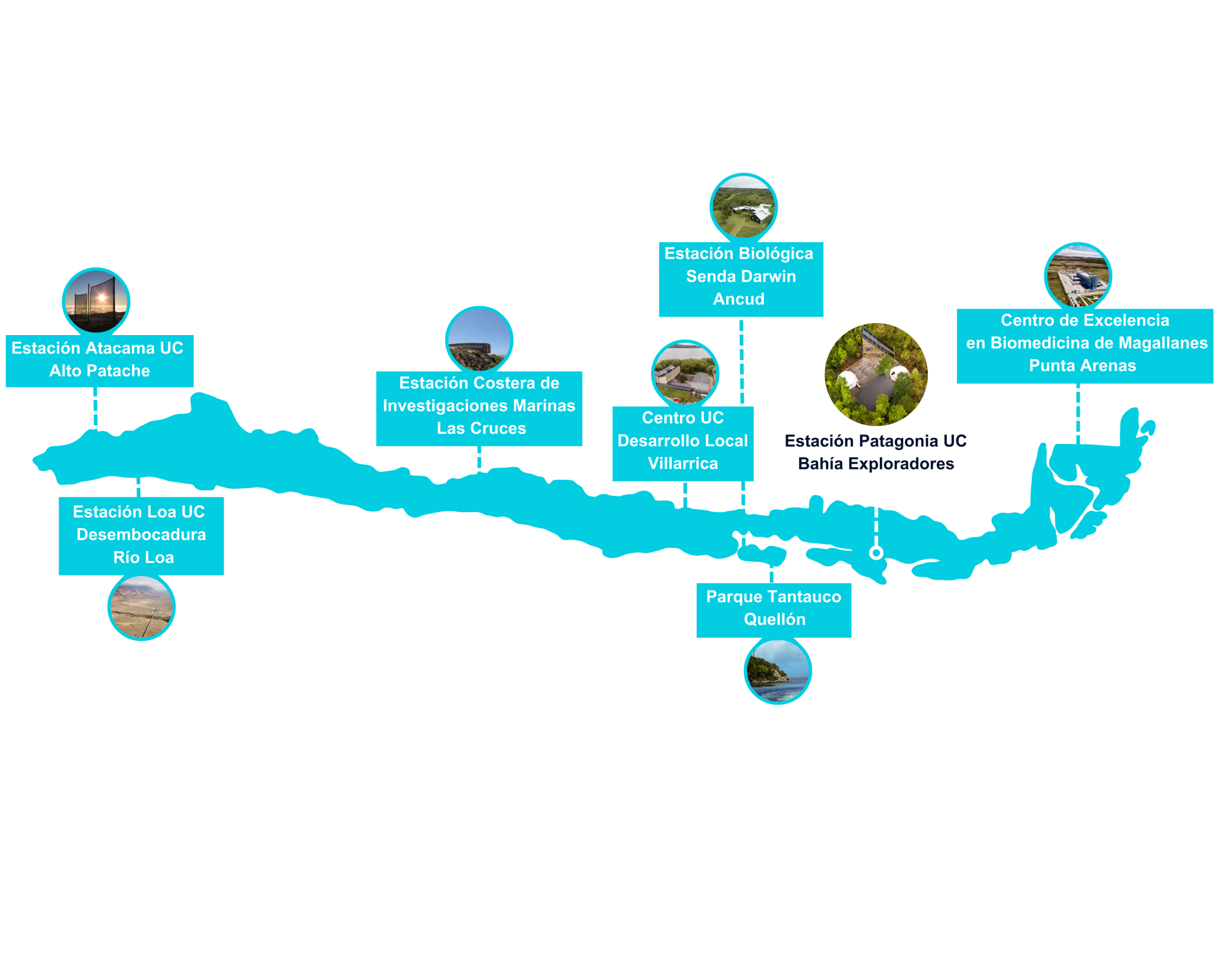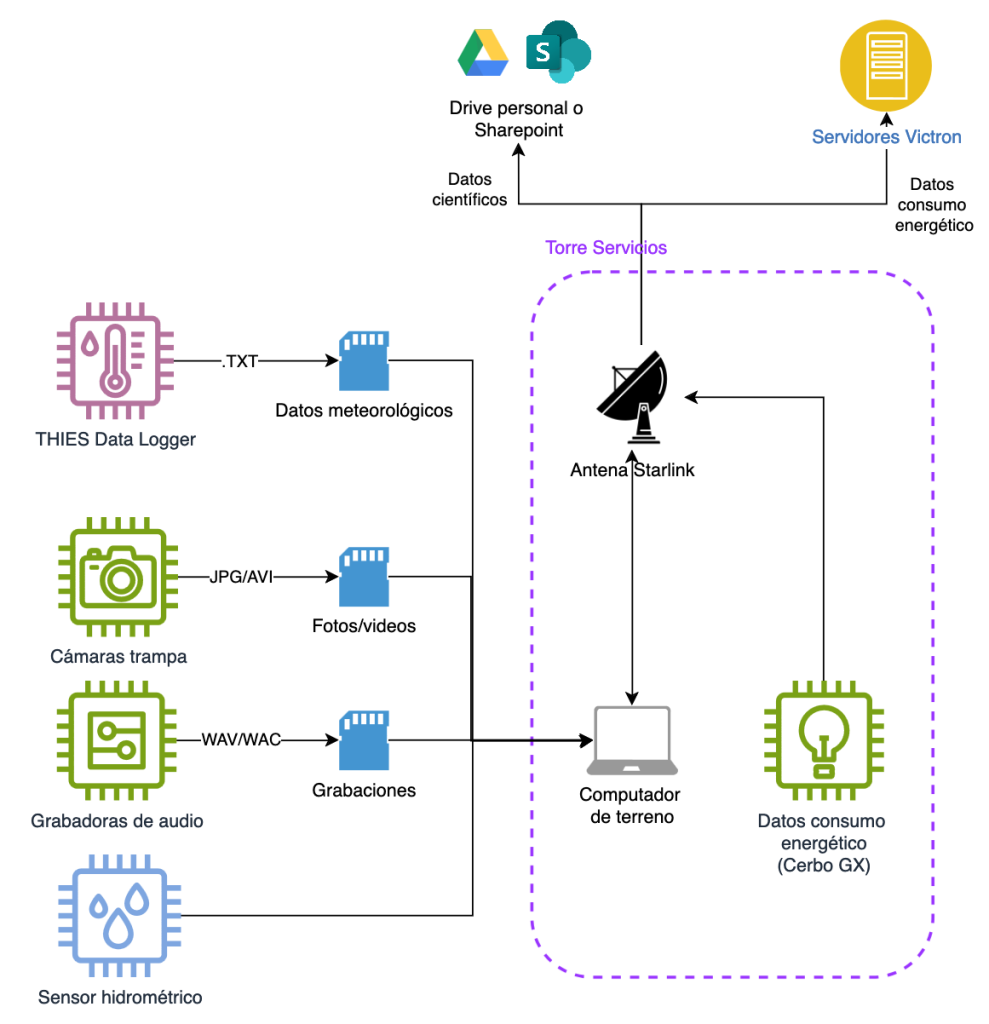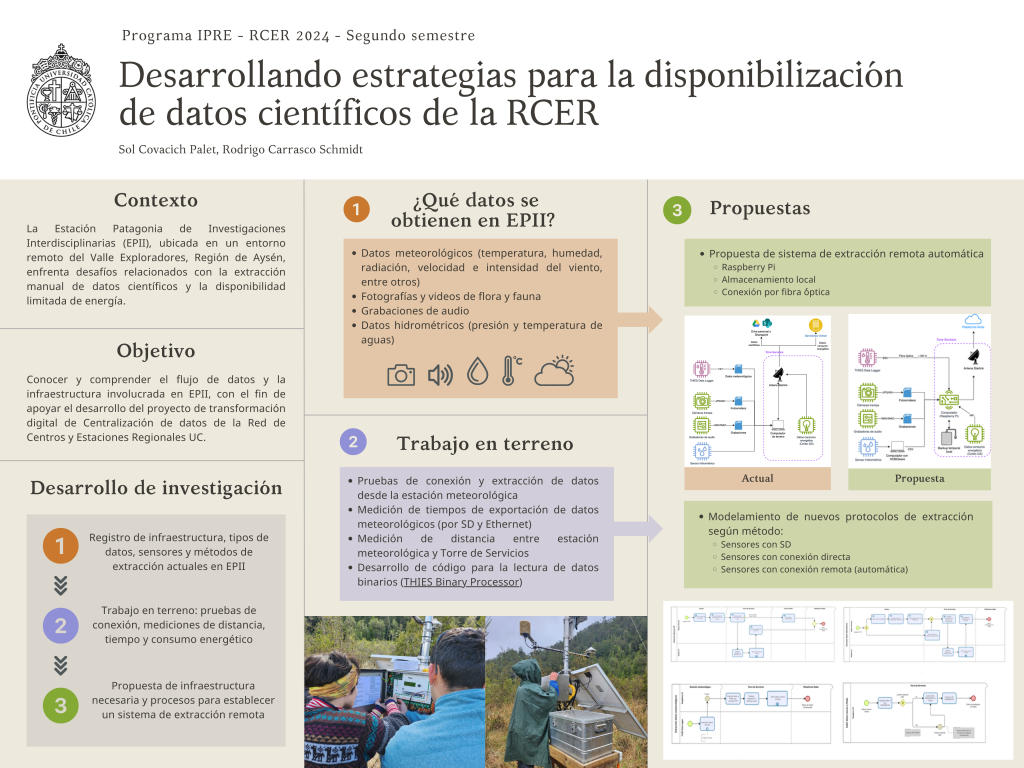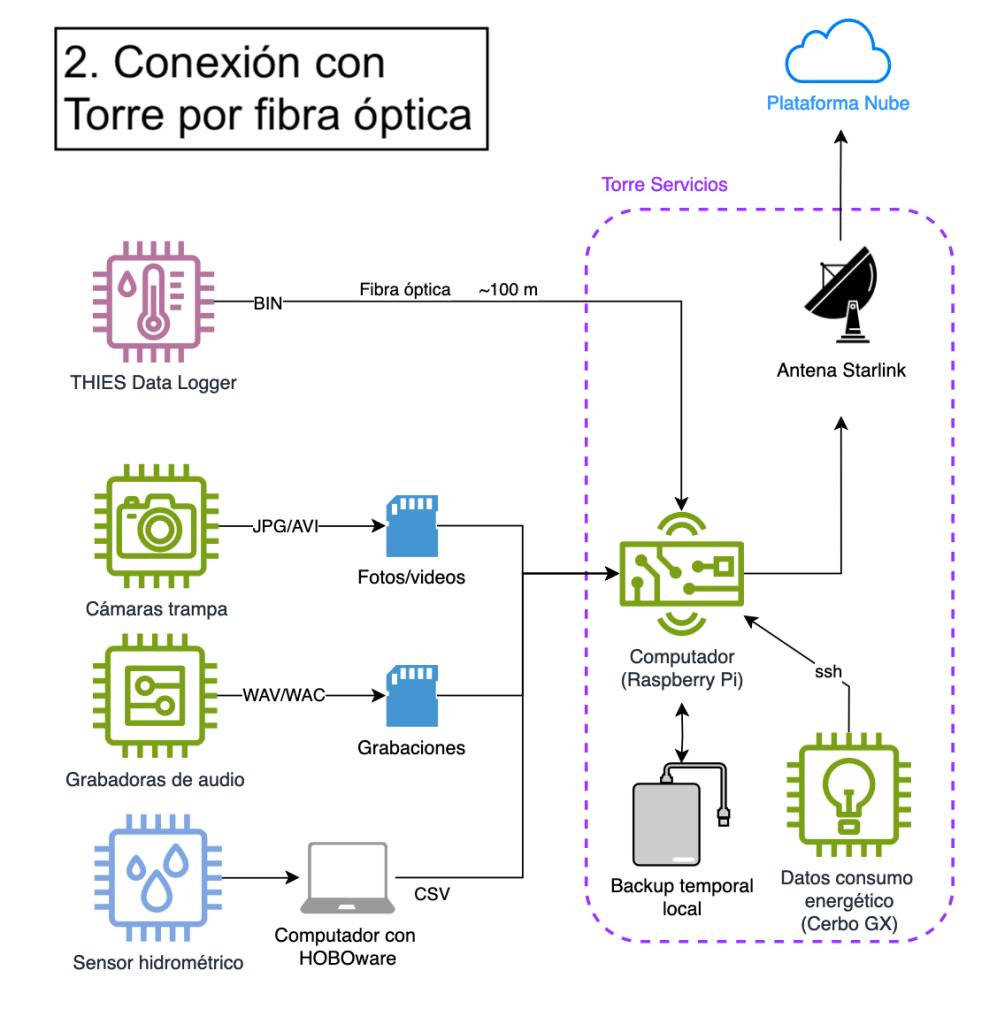Sol Covacich
Rodrigo Arnaldo Carrasco
Portada » Technology and Nature: Innovation at the Heart of Patagonia to Facilitate Access to Scientific Data

Computer Engineering Student
Pontificia Universidad Católica de Chile (UC) operates a network of Regional Centers and Stations (RCER) spanning from the Loa River mouth to Magallanes. These centers focus on interdisciplinary research, encouraging studies in Chile’s most representative ecosystems to address local problems of global relevance. The network comprises nine centers, including the Patagonia Interdisciplinary Research Station UC (EPII UC), located in the remote Exploradores Valley—a unique site to study the environmental history and current challenges of the Aysén region.
The Patagonia Station covers various research areas that allow a comprehensive analysis of the region’s ecosystem. Among its main lines of study are local vegetation, the impact of invasive species, sustainable architecture, the dynamics of water and soil, as well as the effects of climate changes over time. Using an advanced network of specialized equipment and sensors, a constant measurement of fundamental environmental variables is carried out, such as wind speed, temperature, solar radiation, soil humidity, as well as the presence of native fauna using cameras and audio recorders. This methodology, based on the precise collection of data in real time, allows changes and trends to be monitored over time. The data obtained is processed and analyzed by the research team, which provides a detailed and updated understanding of the Patagonian ecosystem, and allows the impact of environmental and human factors on the biodiversity and natural resources of the region to be evaluated.

Map of Chile showing the locations of the various centers and stations that form RCER.
However, the station’s remoteness and climatic conditions pose various challenges. Energy availability, derived from solar panels, is crucial for ensuring the uninterrupted operation of monitoring equipment. Additionally, the manual retrieval of scientific data from equipment, conducted only every three months, limits the frequency of data updates. Since this data is essential for regional research, optimizing processes for both data collection and accessibility is necessary, considering the location’s connectivity limitations and restricted energy availability.
To tackle this challenge, Sol Covacich, an undergraduate student at the UC School of Engineering, guided by Professor Rodrigo A. Carrasco from the Department of Industrial and Systems Engineering and the Institute of Mathematical and Computational Engineering, collaborated with RCER UC under the Undergraduate Research Program (IPre). Together, they studied and designed an efficient and robust data collection system to advance scientific studies in the area.

Sol Covacich and Benjamín Aranda (Geography student), in the field checking one of the sensors at the Patagonia Station.
The primary goal of the visit to Patagonia was to evaluate the current data extraction process of the station’s sensor network. This included identifying the types of sensors used, their distribution on-site, and the information flow from its capture to its storage on researchers’ computers and, in some cases, cloud services like Google Drive and OneDrive. The aim was to identify potential improvements and their integration with the RCER Data Platform, currently being developed in the cloud by the UC Data Science Initiative. The sensors were classified based on their requirements: those needing an SD card for data storage, those allowing a direct connection to a computer with specific software to process the data, and those part of an online monitoring system recording data in real-time.

Diagram of the current infrastructure of the Patagonia Station, illustrating the data flow from the various sensors installed
Computer Engineering Student
Department of Industrial and Systems Engineering
Institute of Mathematical and Computational Engineering

Based on field observations, one example of identified improvements was the meteorological monitoring station, the THIES Data Logger. Currently, this station requires manual data retrieval via an SD card every three months, a process taking approximately 30 minutes. To enhance the frequency of this procedure, an Ethernet connection to a computer was tested, allowing real-time data access as soon as it was stored by the monitoring station. This marked significant progress, reducing waiting times and improving data accessibility.
However, the retrieved data was in binary format, represented as sequences of 0s and 1s according to the manufacturer’s specifications. This format is not readable by humans, unlike more user-friendly formats like plain text (.txt) or comma-separated values (.csv). To address this issue, Sol developed the THIES Binary Processor, an open-source program that automatically converts the binary data into a more accessible and useful format (.csv). This optimization streamlined the analysis process, saving researchers time. The program was also successfully tested with data from other RCER stations.
After gaining an in-depth understanding of the station’s infrastructure and conducting several tests, an innovative proposal was designed to optimize the connection at the Patagonia Station. The solution involves implementing a local data management and collection server with low computational requirements, using a Raspberry Pi—a small, cost-effective computer. This device will enable the automatic extraction of data from the THIES Data Logger via a fiber-optic connection, representing a significant step toward greater efficiency and data availability. Additionally, it will manage data orchestration for all other station sensors, coordinating their transmission to the cloud platform based on data frequency requirements and energy availability.

Proposed infrastructure diagram for the remote extraction of meteorological data
This project will continue its development throughout 2025, focusing on implementing the necessary infrastructure for remote data extraction at the Patagonia Station. The infrastructure will be compatible with the data platform currently being developed by the UC Data Science Initiative.

Computer Engineering Student